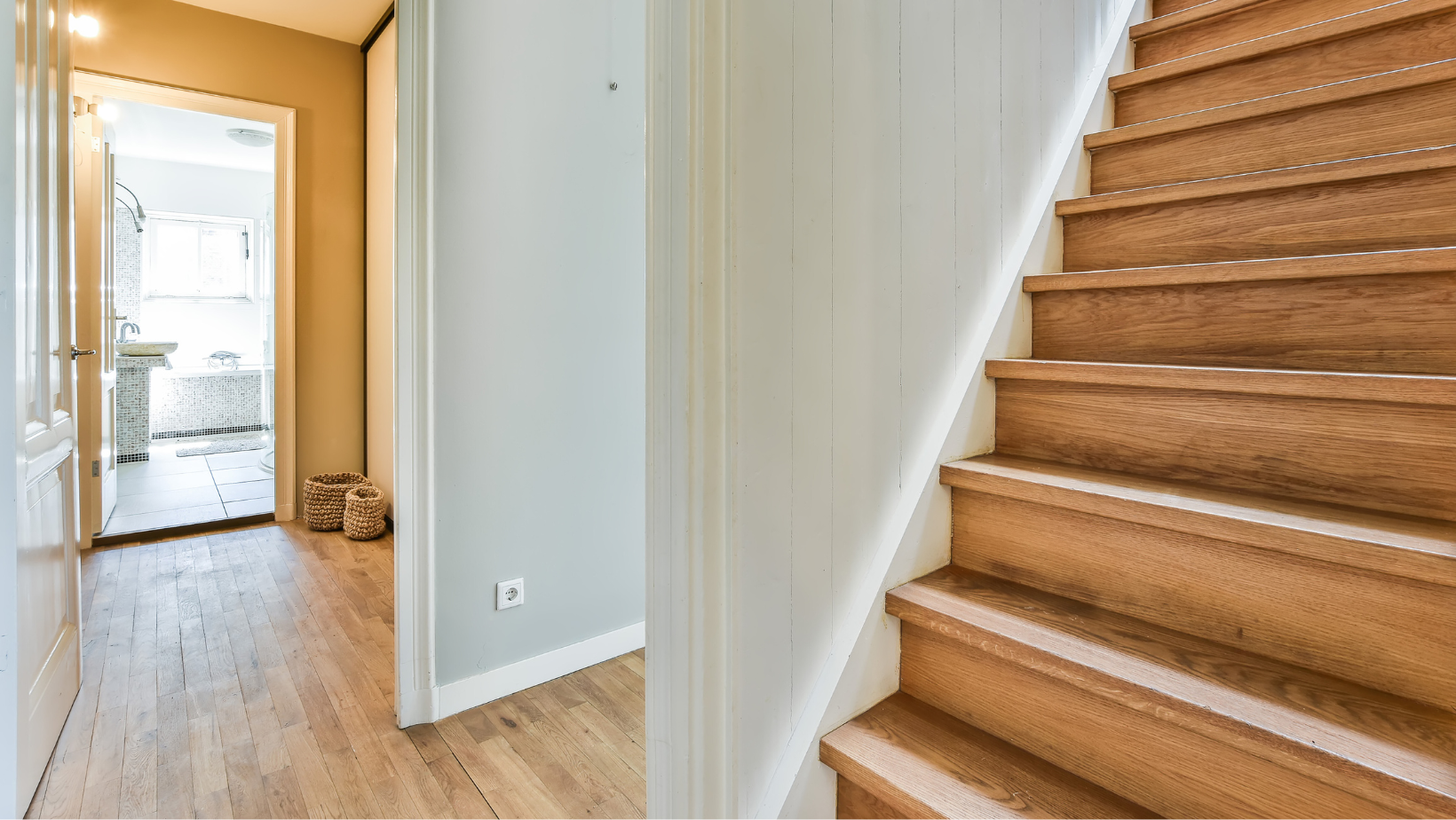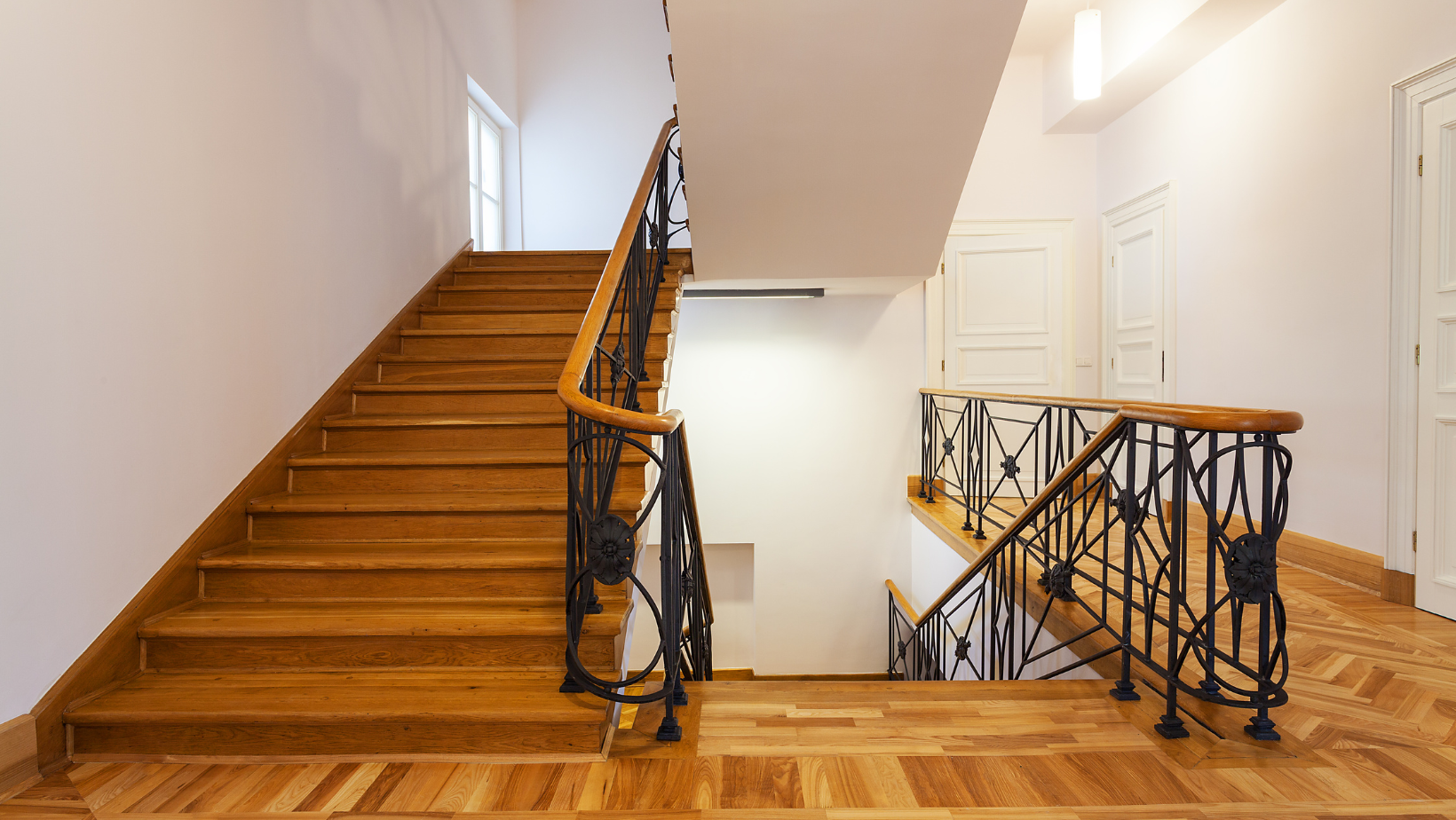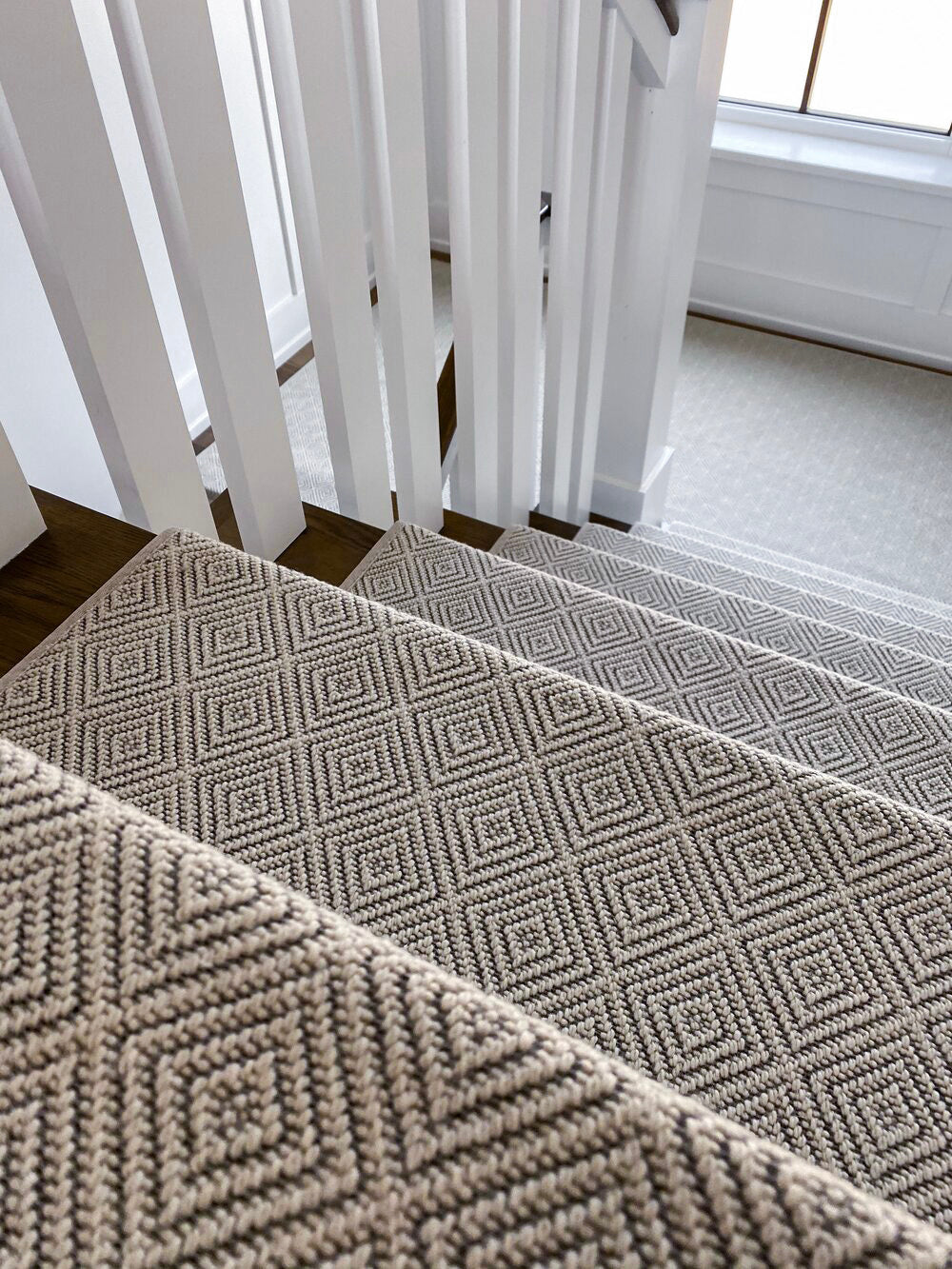If you’re wondering, can you put new stair treads over old ones?—the answer is YES, you absolutely can.
This straightforward method allows you to refresh the look of your staircase without the hassle of removing the existing treads.
In this guide, you’ll learn the benefits of retrofitting, the materials you’ll need, and step-by-step instructions for both wooden and carpet stair treads.
By the end, you’ll have the knowledge and confidence to tackle this DIY project and give your stairs a professional, polished finish.
So, Can You Put New Stair Treads Over Old Ones?
The answer is YES!
This method is commonly used in home renovations because it’s quick, efficient, and less disruptive than removing old treads.
Many homeowners choose this option to save time, especially when working on tight schedules or budgets.
Plus, you don’t need to be a professional to get great results—basic tools and a little patience can go a long way.
What is Retrofitting Stair Treads?
Retrofitting stair treads means covering your old, worn-out stair treads with new ones.
You can use wooden treads or carpet stair treads, depending on your style and the look you want.
The process involves precise measurements to ensure the new treads fit snugly over the existing ones.
It’s also important to choose materials that complement your home’s design and provide durability for high-traffic areas.
By retrofitting, you can refresh your staircase’s appearance without compromising its structural integrity.
Homeowners retrofit their stairs to give them a fresh look, complete a renovation, or fix worn-out steps.
Retrofitting is especially useful if your stairs have cosmetic damage like scratches, stains, or faded finishes.
It’s also a smart choice when you want to update your home’s style without a major construction project.
You can even retrofit stair risers to match the updated treads, creating a cohesive, polished look.
This adds an extra layer of design customization, allowing you to play with colors, textures, and materials.
Can You Put New Stair Treads Over Old Ones?
Yes, you can put new stair treads over old ones.
This method saves time and effort because you don’t have to remove the old treads.
Skipping the removal process also reduces the risk of damaging the underlying staircase structure.
Additionally, retrofitting minimizes the mess and debris that usually comes with demolition work.
It’s an efficient solution for busy homeowners who want to refresh their stairs without the hassle.
Taking out old treads can be tough, especially if they are firmly attached.
Older stairs might have been built with nails, screws, or strong adhesives that are difficult to remove.
Removing them can also reveal hidden issues like splintered wood or uneven surfaces that require additional repairs.
Retrofitting lets you update your stairs without a full renovation, making it an ideal choice for quick, impactful upgrades.
It’s a versatile option that works well for both modern and traditional home designs.
To put new stair treads over old ones, you will need these materials:
-
New stair treads (wooden or carpet)
-
Adhesive felt paper
-
Access cord
-
Nails or screws
-
Hammer or drill
Make sure to choose high-quality materials that can withstand daily foot traffic and wear.
Having the right tools on hand will make the installation process smoother and more efficient.
Double-check your measurements before cutting to ensure a perfect fit, reducing the risk of mistakes during installation.
How Retrofitting Affects Step Height
Adding new treads on top of old ones will raise the height of each step.
While the change might be small, it's important to consider for safety reasons.
A slight increase in step height can affect the way you walk up and down the stairs, especially for children or older adults.
Consistent step heights are crucial because uneven steps can cause trips and falls.
That’s why it’s recommended to measure carefully and make adjustments if needed to maintain safety.
If the increased step height is a problem, you can adjust the risers or get professional help to meet safety codes.
Building codes often specify maximum step heights and minimum tread depths to ensure safe stair use.
If you’re unsure whether your retrofitted stairs meet these codes, consult a contractor or building inspector.
In some cases, trimming the bottom riser or adjusting the top landing can help correct height differences.
Addressing these details ensures that your staircase is both attractive and safe for everyday use.
Retrofitting with Wooden Treads
Wooden stair treads are strong, easy to clean, and work well with many design styles.
They come in various wood types like oak, maple, or cherry, allowing you to choose a finish that complements your home.
Wooden treads are also durable, making them an excellent choice for households with heavy foot traffic.
Plus, they can be stained or painted to match your interior decor, adding a touch of elegance to any staircase.
With proper care, wooden treads can last for years while maintaining their beauty and strength.
Here are the steps to retrofit with wooden treads:
-
Measure the size of your existing treads.
-
Accurate measurements ensure the new treads fit perfectly, reducing gaps or uneven edges.
-
Cut the new wooden treads to fit.
-
Use a circular saw for clean, precise cuts, and sand the edges for a smooth finish.
-
Apply adhesive felt paper to the back of the new treads.
-
This helps secure the treads while reducing noise from foot traffic.
-
Place the new treads over the old ones.
-
Align them carefully to avoid misplacement, as this can affect the look and stability.
-
Secure them with nails or screws.
-
Make sure the fasteners are evenly spaced to prevent shifting and squeaking over time.
Following these steps will give you sturdy, attractive stairs that can withstand daily use while enhancing your home’s style.
Retrofitting with Carpet Stair Treads
Carpet stair treads add warmth, comfort, and style to your stairs.
They’re especially helpful in homes with kids or pets because they reduce slipping and cushion falls.
Carpet also dampens noise, making it ideal for multi-story homes where footsteps can echo.
You can choose from a variety of colors, patterns, and textures to match your home’s decor.
Plus, carpet treads are easy to replace if they become worn or stained over time.
Here’s how to retrofit with carpet stair treads:
-
Measure the size of your current treads.
-
Precise measurements ensure the carpet fits snugly without overhanging the edges.
-
Cut the carpet stair treads to fit.
-
Use a sharp utility knife to achieve clean cuts and prevent fraying.
-
Apply adhesive felt paper to the back of the carpet treads.
-
This helps keep the treads securely in place and reduces movement.
-
Place the carpet treads over the old ones.
-
Smooth out any wrinkles to avoid tripping hazards.
-
Secure them with nails or screws.
-
You can also use carpet staples for extra grip, especially on high-traffic stairs.
With these steps, you’ll have a cozy, stylish staircase that feels soft underfoot while providing added safety.
Benefits of Retrofitting Stair Treads
Retrofitting stair treads offers more than just a fresh look—it’s a smart, practical solution for homeowners.
1. Cost-Effective Solution:
Replacing an entire staircase can be expensive, but retrofitting allows you to update the appearance without the high costs of demolition and reconstruction.
You save on materials, labor, and time.
2. Quick and Easy Installation
Since you’re working over the existing treads, the process is faster and less disruptive.
With basic tools and some patience, you can complete the project over a weekend.
3. Customizable Design
Retrofitting gives you the freedom to choose from various materials, colors, and styles.
Whether you prefer the classic look of wood or the cozy feel of carpet, you can create a staircase that matches your home’s aesthetic.
4. Adds Safety and Comfort
New treads, especially carpeted ones, can improve traction and reduce the risk of slips.
This is particularly helpful in homes with children, pets, or elderly family members.
5. Increases Home Value
An updated staircase can make a big impact when it comes to home aesthetics.
A well-maintained, stylish staircase adds to your home’s overall appeal, potentially increasing its resale value.
Adding new stair treads is not just about looks—it’s an investment in your home’s safety, comfort, and value.
Steps to Success
Retrofitting stair treads is an easy and affordable way to refresh your staircase.
It’s a great DIY project that can dramatically improve the look and feel of your home without major construction.
Whether you choose wooden or carpet treads, this method gives your stairs a new look while keeping safety in mind.
Consider the style, durability, and maintenance needs when selecting materials to ensure long-lasting results.
Always follow safety rules and building codes when retrofitting your stair treads.
If you’re unsure about any part of the process, don’t hesitate to consult a professional for guidance.
Ready to Refresh Your Stairs?
At Oak Valley Designs, we're here to help you transform your staircase into a beautiful, functional part of your home.
Whether you're looking to upgrade with carpet stair treads, add style with landings, or create a seamless look with hallway runners, we’ve got you covered.
Our products are designed to make your DIY projects simple and stress-free, giving your home that polished, custom feel without the hassle.
Let us help you find the perfect solution for your home:
-
Explore our wide range of stair treads, landings, and runners.
-
Get expert advice tailored to your style and needs.
-
Enjoy easy-to-install products that deliver lasting beauty and comfort.
Reach Out Today:
-
Website: https://oakvalleydesigns.com/
-
Phone: 706.331.0315
-
Email: info@oakvalleydesigns.com
-
Address: 30 River Ct SW, Bldg E, Cartersville, GA 30120
We’re here to help you create a home you’ll love—one step at a time.




